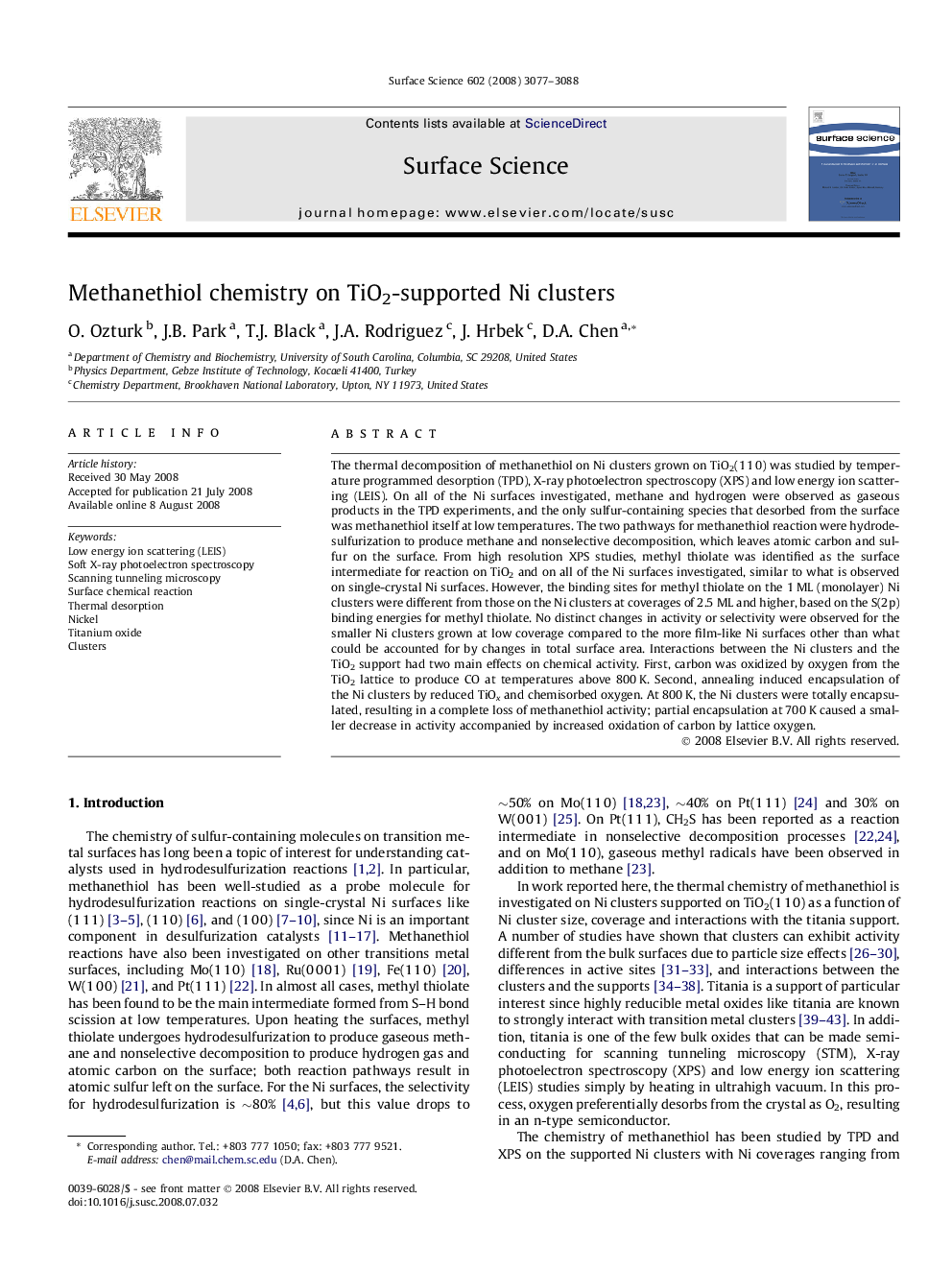| کد مقاله | کد نشریه | سال انتشار | مقاله انگلیسی | نسخه تمام متن |
|---|---|---|---|---|
| 5424815 | 1395837 | 2008 | 12 صفحه PDF | دانلود رایگان |
عنوان انگلیسی مقاله ISI
Methanethiol chemistry on TiO2-supported Ni clusters
دانلود مقاله + سفارش ترجمه
دانلود مقاله ISI انگلیسی
رایگان برای ایرانیان
کلمات کلیدی
Soft X-ray photoelectron spectroscopy - اشعه ماوراء بنفش اشعه ایکسTitanium oxide - اکسید تیتانیوم Clusters - خوشهThermal desorption - دفع حرارتیScanning tunneling microscopy - میکروسکوپ تونلی روبشی Nickel - نیکلSurface chemical reaction - واکنش شیمیایی سطحLow energy ion scattering (LEIS) - پراکندگی یونهای انرژی پایین (LEIS)
موضوعات مرتبط
مهندسی و علوم پایه
شیمی
شیمی تئوریک و عملی
پیش نمایش صفحه اول مقاله

چکیده انگلیسی
The thermal decomposition of methanethiol on Ni clusters grown on TiO2(1Â 1Â 0) was studied by temperature programmed desorption (TPD), X-ray photoelectron spectroscopy (XPS) and low energy ion scattering (LEIS). On all of the Ni surfaces investigated, methane and hydrogen were observed as gaseous products in the TPD experiments, and the only sulfur-containing species that desorbed from the surface was methanethiol itself at low temperatures. The two pathways for methanethiol reaction were hydrodesulfurization to produce methane and nonselective decomposition, which leaves atomic carbon and sulfur on the surface. From high resolution XPS studies, methyl thiolate was identified as the surface intermediate for reaction on TiO2 and on all of the Ni surfaces investigated, similar to what is observed on single-crystal Ni surfaces. However, the binding sites for methyl thiolate on the 1Â ML (monolayer) Ni clusters were different from those on the Ni clusters at coverages of 2.5Â ML and higher, based on the S(2p) binding energies for methyl thiolate. No distinct changes in activity or selectivity were observed for the smaller Ni clusters grown at low coverage compared to the more film-like Ni surfaces other than what could be accounted for by changes in total surface area. Interactions between the Ni clusters and the TiO2 support had two main effects on chemical activity. First, carbon was oxidized by oxygen from the TiO2 lattice to produce CO at temperatures above 800Â K. Second, annealing induced encapsulation of the Ni clusters by reduced TiOx and chemisorbed oxygen. At 800Â K, the Ni clusters were totally encapsulated, resulting in a complete loss of methanethiol activity; partial encapsulation at 700Â K caused a smaller decrease in activity accompanied by increased oxidation of carbon by lattice oxygen.
ناشر
Database: Elsevier - ScienceDirect (ساینس دایرکت)
Journal: Surface Science - Volume 602, Issue 19, 1 October 2008, Pages 3077-3088
Journal: Surface Science - Volume 602, Issue 19, 1 October 2008, Pages 3077-3088
نویسندگان
O. Ozturk, J.B. Park, T.J. Black, J.A. Rodriguez, J. Hrbek, D.A. Chen,